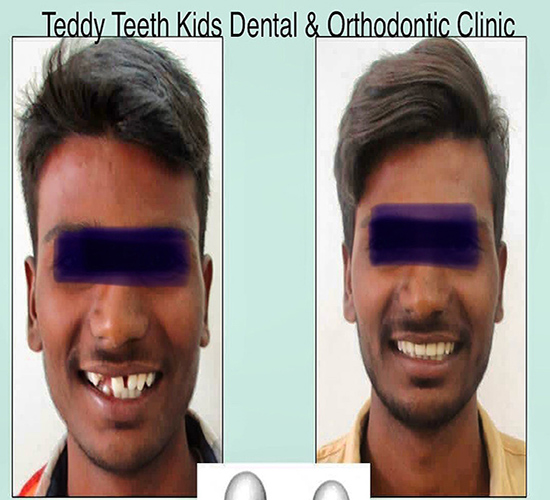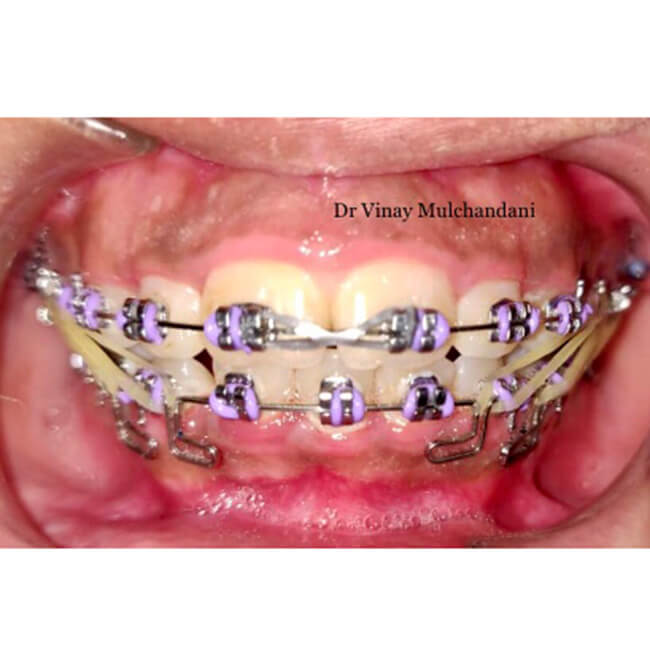
Orthodontics Treatment
Braces are orthodontic or dental devices responsible for straightening crooked teeth or malocclusion for the most part. They can make your teeth align so you won’t have a prominent underbite, scissor-bite, or overbite.
Orthodontics is a specialist branch of dentistry. The term "orthodontics" can be broken down into two Greek words - "orthos" meaning straight or correct and "dontics" meaning teeth. Orthodontics therefore describes the practice of straightening misaligned teeth or malocclusions. Dentists who specialize in orthodontics can help manage abnormal positioning of the teeth, jaws and face.
- Improved function of teeth including better chewing and clearer pronunciation and speech
- Reduced risk of dental caries occurring due to the collection of food particles between the teeth
- Reduced risk of gum injury and trauma due to overbites and malocclusions

Braces Treatment
Dental braces are wire-based appliances that orthodontists use to correct crowded and misaligned teeth or jaws. Many people who need dental braces get them during their early teenage years, but adults also can benefit from wearing braces. The goal of dental braces is to properly align your teeth and jaws to produce an even bite and pleasing smile.
Metal/traditional braces: Traditional braces are made of metal. They include brackets that are attached to the front of your teeth or bands that fit around each tooth, as well as flexible wires or arch wires that hold the brackets or bands together. Some braces also include rubber bands or metal ties that link the brackets to the wire. These bands create more pressure to help straighten and align your teeth. Sometimes, your orthodontist will have you wear a device called headgear at night. It provides added pressure to help straighten your teeth. You can put it on and take it off.
Ceramic braces: The brackets in traditional braces are now also made in tooth-colored ceramic, so you don’t notice them as much. They can also be made with stainless steel, clear materials, or gold.
Lingual braces: The brackets on these braces are attached to the backs of your teeth, facing your tongue. Lingual braces are harder to see.
Clear aligners: You might also hear them called invisible braces. These are clear plastic trays that fit snugly onto your teeth. They use pressure to gently move your teeth into the correct positions and straighten your smile. You remove the aligners to eat, brush, or floss, but you should keep them in at least 22 hours each day for them to work. The orthodontist may also place tooth-colored attachments onto your teeth to hold the aligners in place. Find more information on dental aligners and how to straighten teeth at home.
Copyright © 2021 Grin is proudly created by HiBootstrap
